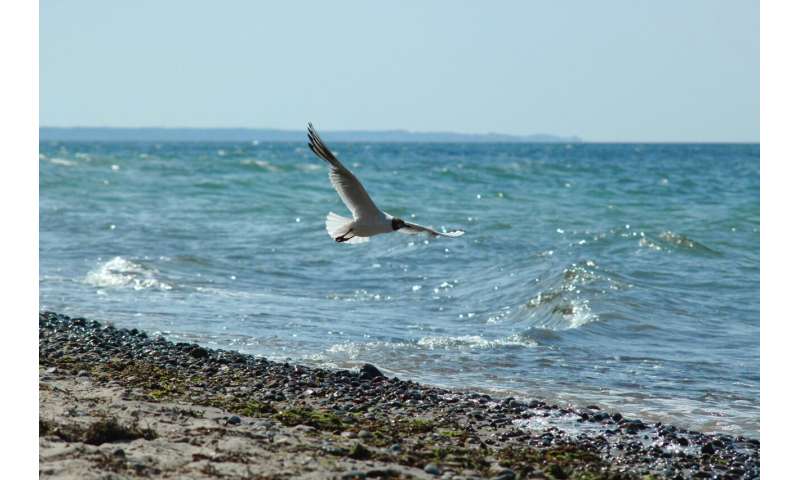Strong saltwater inflow into the Baltic Sea detected

A large influx of saltwater into the south-western Baltic Sea is currently being detected by the autonomous measuring station operated by the Leibniz Institute for Baltic Sea Research Warnemünde (IOW) at the Darss Sill. The station has been measuring a strong inflow of salty water throughout the water column since Dec. 20, 2023, which is a comparatively rare occurrence.
Over Christmas day, it will become clear whether the inflow is similar in scale to the major saltwater intrusion in 2014. Saltwater inflows are accompanied by oxygen-rich water that could aerate oxygen-poor, deeper basins in the Baltic Sea, which in turn prevents the formation of toxic hydrogen sulfide.
Almost nine years to the day after the last major saltwater intrusion in December 2014, large quantities of saltwater are currently flowing over the Darss Sill into the eastern Baltic Sea again.
"Since 20.12.2023, salty water has been flowing over the Darss Sill not only at the bottom, but also in the entire water column. This is a good indicator of a major saltwater intrusion," says Dr. Volker Mohrholz, oceanographer at the Leibniz Institute for Baltic Sea Research Warnemünde (IOW). This is the case when significantly increased salt content in the Water is measured at the Darss Sill over a period of five days. On Christmas Day, it will therefore become clear whether this is the first major saltwater inflow since 2014, a so-called "Major Baltic Inflow" (MBI). Back then, the third largest saltwater intrusion occurred since oceanographic measurements began in 1912.
The saltwater intrusion was probably triggered by the wind conditions of recent weeks: Persistent winds in the first half of December from a south-easterly direction led to a lowering of the Baltic Sea level and the outflow of water masses towards the North Sea. Following the onset of strong westerly winds in connection with storm Zoltan, large quantities of salty water are currently flowing into the Baltic Sea in the opposite direction.
Saltwater inflows are associated with the inflow of well oxygenated North Sea water into the Baltic Sea. This allows oxygen-poor, deeper basin areas such as the Gotland Basin to be aerated with oxygen, which in turn prevents the formation of toxic hydrogen sulfide. However, we know from measurements of the IOW long-term observation program for the Baltic Sea that the effect does not last too long.
"Our autonomous measuring stations deployed in the southwestern Baltic Sea on behalf of the Federal Maritime and Hydrographic Agency (BSH) are important real-time data providers, without which such short-term events and long-term changes in the water masses could not be documented with this temporal resolution," says Prof. Dr. Oliver Zielinski, Director of the Leibniz Institute for Baltic Sea Research (IOW).
These data series are a basic prerequisite for science-based overview studies on the state of the Baltic Sea, which are developed by IOW scientists in collaboration with other national and international research institutions.
Provided by Leibniz-Institut für Ostseeforschung Warnemünde